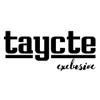Dive Brief:
- Consumer Reports found Whole Foods' Starkey Spring Water has what the group called "concerning levels" of arsenic.
- Consumer Reports tested 45 brands of bottled water and Starkey was the only one to register levels above 3 parts per billion (ppb) of the chemical element. In four samples of Starkey, arsenic levels ranged from 9.48 to 9.86 ppb of arsenic; the fourth registered 10.1 ppb. The FDA limits arsenic levels to 10 ppb in drinking water as a federal safety threshold.
- The brand, which was launched by Whole Foods five years ago, has previously been criticized for its arsenic levels. In late 2016 and early 2017, Whole Foods recalled more than 2,000 cases of Starkey after Florida’s bottled water regulator found it had 11.7 ppb of arsenic. The water brand also is a target of two pending class-action lawsuits over the brand's health labeling.
Dive Insight:
This is not the first time Consumer Reports has called out Whole Food's Starkey water brand. Last year, the magazine and consumer advocacy group tested 130 bottled water brands and found 11 contained detectable arsenic levels. One of those brands was Starkey.
In the results released this year, Consumer Reports found arsenic levels did not improve compared to 2019. Starkey water contained 9.8 ppb of arsenic in its water, the second-highest level out of the 130 bottled water brands they tested. The brand's own internal tests show arsenic levels at up to 9 ppb.
This latest discovery brings further public scrutiny to a brand that has had recalls and lawsuits tied to the heavy metal. In a statement to the Washington Post, Whole Foods defended itself saying arsenic occurs naturally and that "these products meet all FDA requirements and are fully compliant with FDA standards for heavy metals."
Although arsenic occurs naturally, consumption over time has been linked to cardiovascular problems, lower IQ scores in children and certain cancers, according to the World Health Organization. Research cited by Consumer Reports claims health risks from arsenic consumption can occur even at a level lower than 10 ppb. Federal limits for arsenic in bottled water are less stringent than the regulations imposed on tap water in New Jersey and New Hampshire that limit arsenic levels to 5 ppb.
Improved bottled water quality has been a concern for Consumer Reports. The group has advocated for lowering the permissible level from 10 ppb to 3 ppb. The advocacy group said this would prevent companies from citing compliance with federal regulations as a reason to not work toward eradicating the existence of potentially dangerous contaminants in water.
The divergence between allowable limits of this heavy metal in bottled water and tap water may cause some consumers to think twice before purchasing from brands like Starkey that have been called out for coming close to surpassing the federal limit for arsenic.
Bottled water remains the most popular beverage among consumers, but with its popularity comes concerns about the high amount of plastic waste that it produces. According to Beverage Marketing Corporation, U.S. consumption of bottled water skyrocketed 284% between 1994 and 2017, reaching nearly 42 gallons per person each year — most of that growth comes from single-serve plastic bottles that make up about two-thirds of U.S. sales, The Wall Street Journal reported. However, continued pressure on companies has forced them to look at alternative packaging formats, including boxed water and refillable dispensing machines.
For Whole Foods shoppers that are dependent on bottled water, the findings from Consumer Reports could lead them to seek out other brands in the store. While private label has been a bright spot for retailers in recent years, the $1.99 price tag associated with Starkey may not be enough to convince consumers to remain loyal.
Consumer Reports has conducted similar tests for other products like fruit juice. While tests showed 21 juices on the market had elevated quantities of heavy metals, the levels have improved since similar tests were conducted in 2011. Perhaps water companies will take a cue from the juice category and do the same, or consumers might find other ways to get their fill of the life-sustaining beverage.














